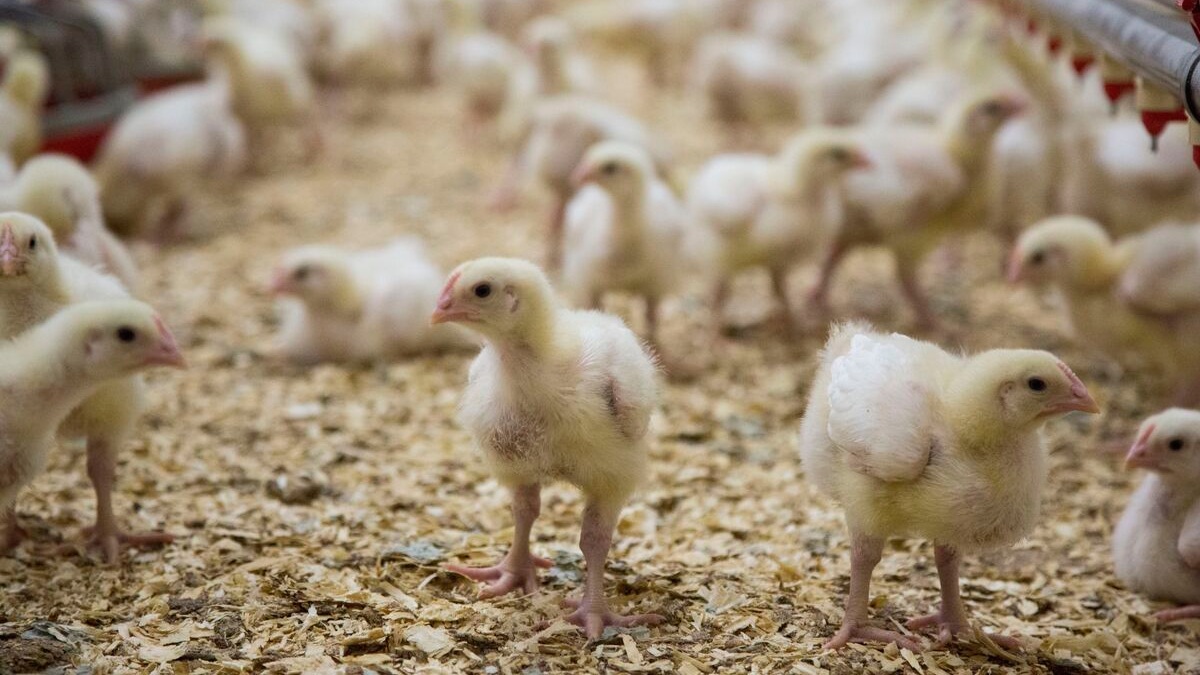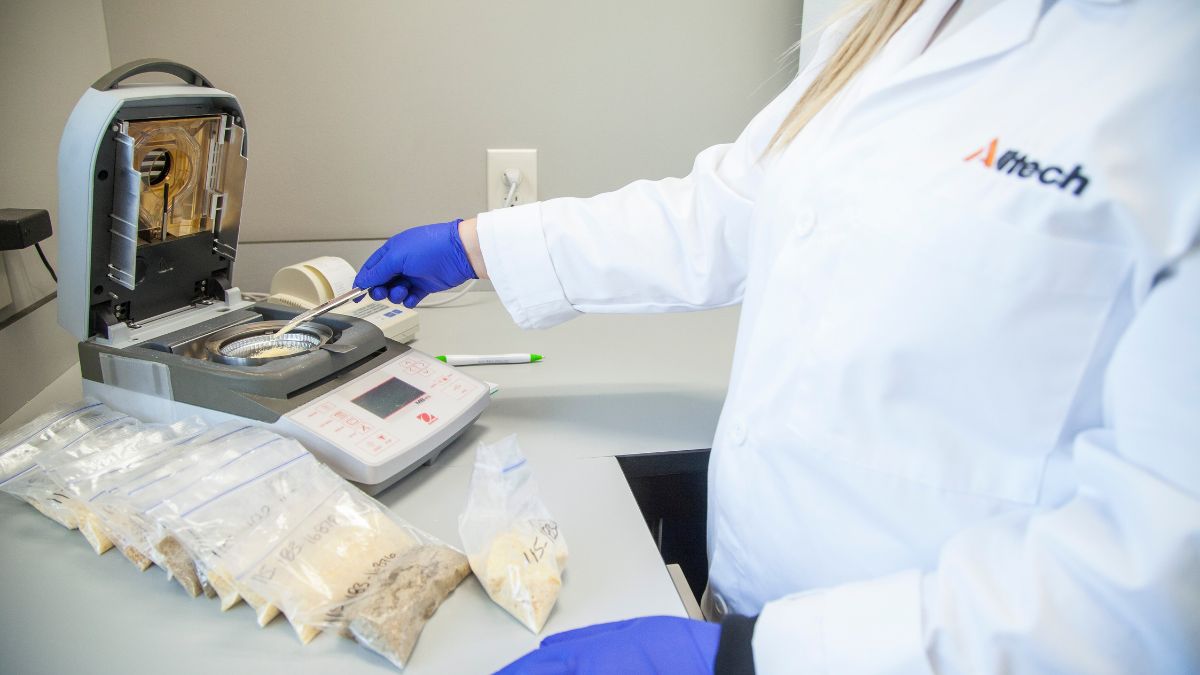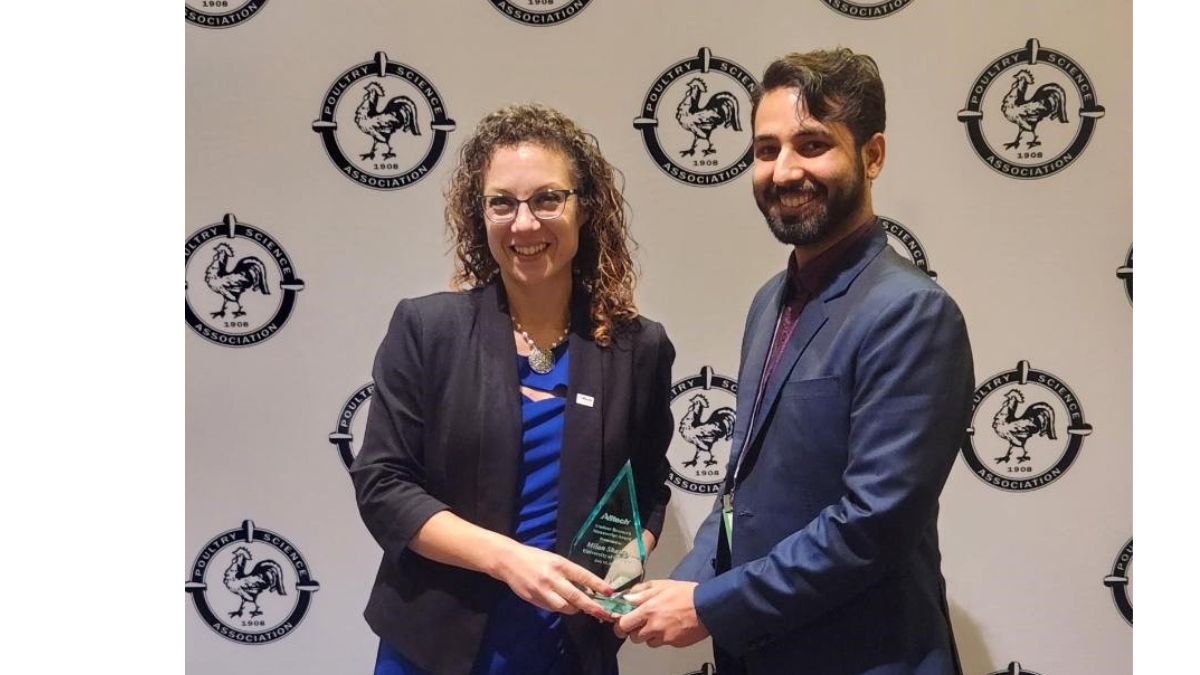“Green” poultry farming: Keeping it profitable and sustainable
What is sustainability?
The term “sustainability” has a lot of different meanings depending on whom you talk to and what their opinions are. In a broad context, global sustainability is an all-encompassing approach that includes environmental, social and economic resources.
When sustainability is talked about in the media in regard to agriculture, the environmental aspect is the one most focused on. For this blog, the environmental impact of poultry farming, especially with meat chickens and laying hens, will be discussed.
However, it is critical to acknowledge the positive economic and social sustainability provided by agriculture and poultry farming.
Where does commercial poultry farming stand?
Poultry are unique in their breeding potential and the resulting creation of consumable protein, whether it is via eggs or meat. A bird generally has a three-week incubation period, with efficient and rapid growth.
When we look at protein production, meat chickens have the highest consumable protein-to-live-weight ratio when compared with other livestock sectors. However, this type of measurement does not take into consideration other aspects that contribute to biodiversity, carbon recycling, and other environmental considerations. For example, cattle production (beef and dairy) may have higher greenhouse gas emissions than commercial poultry farming production, but responsible grazing management helps to maintain natural wildlife habitats and remove carbon dioxide from the atmosphere.
Improvements over time and differences within production systems
Environmental life cycle assessments, as recognized by the United Nations environmental program, study environmental factors in the food supply chain. While this type of assessment is a good start, giving an idea of the impact of raising poultry, it does not consider many factors such as biodiversity, social and economic impacts.
Several environmental life cycle assessments for poultry production have been published, in many countries including Canada and the United States. The values from these assessments can be very region-specific.
Environmental impact of meat chicken
Chicken Farmers of Canada, Canada – 2017 vs. 1976 (CFC, 2018)
- Major productivity gains and 20% improvement in feed conversion ratio
- 45% lower water consumption
- 37% lower non-renewable energy consumption
- 37% lower greenhouse gas emissions
National Chicken Council, United States – 2020 vs. 2010 (NCC, 2021); 2010 vs. 1965 (Putman et al., 2017)
- Between 2010 and 2020, produced 21% more chicken by weight
- Between 2010 and 2020, had 13% lower water consumption per kilogram of bird production, compared to 58% lower from 1965 to 2010
- Between 2010 and 2020, had 13% less land use per kilogram of bird production, compared to 72% less from 1965 to 2010
- Between 2010 and 2020, had 18% lower greenhouse gas emissions per kilogram of bird production, compared to 36% lower from 1965 to 2010
Environmental impact of egg production
Egg Farmers of Canada, Canada – 2012 vs. 1962 (Pelletier, 2017; Turner et al., 2019)
- Egg production increased more than 50%, with 35% improvement in feed conversion efficiency
- 81% less land used per unit of eggs produced
- 69% less water used per unit of eggs produced
- 72% lower greenhouse gas emissions per unit of eggs produced
- Various housing systems (e.g., organic, free run single or multitier, conventional, enriched) had different environmental impacts, with trade-offs between specific impacts
Egg Industry Center, United States – 2010 vs. 1960 (Pelletier et al., 2014)
- Egg production increased 27%, with 26% improvement in feed conversion efficiency
- 32% lower water use per dozen eggs
- 71% lower greenhouse gas emissions per kilogram of eggs produced
In many countries, feed production had the most impact on the environment and resources. Different grains had different impacts depending on water use, contribution to nutrient runoff, ecosystem acidification and release of nitrogen. Work completed in the United Kingdom showed that the environmental impact of grains also changed depending on whether the grain had to be imported or was grown locally. Additionally, work completed in Brazil considered that the level of technology applied while raising poultry, along with the local availability of grains, had a major effect on emissions.
We must applaud the poultry industry for its constant improvements in production, resource use and emissions. Strategies such as continuing to improve efficiency and optimize manure management through actions such as nutrient cycling can be examples moving forward and will continue to help with farm profitability.
How can environmental sustainability relate to bird efficiency and profitability?
The connection between bird and intestinal health and environmental sustainability may seem far-fetched. Poultry have an amazing capability to turn feed into food. To maintain this efficiency at its optimum level, the bird should have as few stressors as possible so that the body can be focused on digesting and absorbing nutrients. Various feed additives, such as mannan-rich fraction (MRF), can successfully be used to support gut health management and overall bird performance.
The other side of poultry production is that what goes into the bird must come out of the bird as manure. Feeding as close to the bird’s requirements as possible is one step in reducing an overflow of nutrients being excreted into the manure. Different feed additives, including enzymes, can be used to prevent overfeeding of some nutrients and help with better utilization of byproducts, which can lessen the cost of feed. Another way to reduce the potential for nutrient runoff is to use proteinated trace minerals that are readily absorbed by the animal. When the mineral is readily absorbed by the animal, less of it can be included in the feed and less is excreted in the manure.
Some regions are focused on the environmental concern of nitrogen emissions into the atmosphere, and this concern can be partially addressed with feed. Nitrogen is a part of the protein that a bird must consume in order to grow. This protein is broken down in the bird and then released in several ways into the manure as different molecules that contain nitrogen. One of these molecules is ammonium, which can be released into the air as ammonia. As birds are fed closer to their true nitrogen requirements, nitrogen excretion and ammonia release are reduced, preventing emissions into the atmosphere. Another way to help reduce ammonia loss to the atmosphere is through the use of litter amendments or through the feed with different binding products, such as those derived from the Yucca schidigera plant. However, if a plant extract is being used to combat this issue, there has to be an environmental sustainability plan in place to offset the harvesting of the plant.
Where to go from here
Overall, poultry productions in many countries have reduced their total environmental footprint over time while maintaining the positive economic and social benefits of the industry.
Feed production has been found to have some of the highest impacts on the total footprint in broiler meat and egg production. Various nutritional strategies can be used to improve different aspects that contribute to a production’s total environmental footprint and overall profitability. Currently, poultry are not 100% efficient at converting feed to food, so there is a limit on the impact of nutritional and health strategies that must be combined with other methods to improve emissions and resource use.
This is a paraphrase of an article printed in Canadian Poultry Magazine (July 2, 2020) – “Building a green footprint,” by Kayla Price
References
“Broiler production system life cycle assessment: 2020 update.” National Chicken Council. Retrieved September 18, 2023. < https://nccsite.wpengine.com/wp-content/uploads/2021/09/Broiler-Production-System-LCA_2020-Update.pdf>
Da Silva Lima, N.D., de Alencar Nääs, I., Garcia, R.G., and de Moura, D.J. 2019. Environmental impact of Brazilian broiler production process: Evaluation using life cycle assessment. Journal of Cleaner Production 237: https://doi.org/10.1016/j.jclepro.2019.117752.
Dyer, J.A., Verge, X.P.C., Desjardins, R.L., and Worth, D.E. 2010. The protein-based GHG emission intensity for livestock products in Canada. Journal of Sustainable Agriculture 34: 618-29.
“Environmental sustainability.” Canadian Cattlemen’s Association. Retrieved April 29, 2020. <https://www.cattle.ca/sustainability/environmental-sustainability/>
Leinonen, I., Williams, A.G., Wiseman, J., Guy, J., and Kyriazkis, I. 2012. Predicting the environmental impacts of chicken systems in the United Kingdom through a life cycle assessment: Broiler production systems. Poultry Science 91: 8-25.
Leinonen, I., Williams, A.G., Wiseman, J., Guy, J., and Kyriazkis, I. 2012. Predicting the environmental impacts of chicken systems in the United Kingdom through a life cycle assessment: Egg production systems. Poultry Science 91: 26-40.
McClelland, S.C., Arndt, C., Gordon, D.R., and Thoma, G. 2018. Type and number of environmental impact categories used in livestock life cycle assessment: A systematic review. Livestock Science 209: 39-45.
Nguyen, T.T.H, Bouvarel, I., Ponchant, P., and van der Werf, H.M.G. 2011. Using environmental constraints to formulate low-impact poultry feeds. Journal of Cleaner Production 28: 215-24.
Pelletier, N. 2017. Life cycle assessment of Canadian egg products, with differentiation by hen housing system type. Journal of Cleaner Production 152: 167-80.
Pelletier, N. 2018. Changes in the life cycle environmental footprint of egg production in Canada from 1962 to 2012. Journal of Cleaner Production 176: 1144-53.
Pelletier, N., Doyon, M., Muirhead, B., Widowski, T., Nurse-Gupta, J., and Hunniford, M. 2018. Sustainability in the Canadian egg industry: Learning from the past, navigating the present, planning for the future. Sustainability 10: 3524.
Pelletier, N., Ibarburu, M., and Xin, H. 2014. Comparison of the environmental footprint of the egg industry in the United States in 1960 and 2010. Poultry Science 93: 241-55.
Powers, W. and Angel, R. 2008. A review of the capacity for nutritional strategies to address environmental challenges in poultry production. Poultry Science 87: 1929-38.
Putman, B., Thoma, G., Burek, J., and Matlock, M. 2017. A retrospective analysis of the United States poultry industry: 1965 compared with 2010. Agricultural Systems 157: 107-117.
“Sustainability assessment of the Canadian chicken value chain.” Chicken Farmers of Canada. Retrieved April 29, 2020. <https://www.chickenfarmers.ca/resources/sustainability-assessment-of-the-canadian-chicken-value-chain/>
“Sustained progress: Environmental efficiency of Canadian milk production.” Dairy Farmers of Canada. Retrieved April 29, 2020. <https://dairyfarmersofcanada.ca/sites/default/files/2019-06/PLC-Info-%20EN.pdf>
Turner, I., Heidari, D., and Pelletier, N. 2022. Life cycle assessment of contemporary Canadian egg production systems during the transition from conventional cage to alternative housing systems: Update and analysis of trends and conditions. Resources, Conversation and Recycling 176: 1-11.
“What is sustainability?” University of Alberta Office of Sustainability. Retrieved April 29, 2020. <https://www.mcgill.ca/sustainability/files/sustainability/what-is-sustainability.pdf>
I want to learn more about poultry nutrition.
- Read more about “Green” poultry farming: Keeping it profitable and sustainable
- Log in to post comments

<script charset="utf-8" type="text/javascript" src="//js.hsforms.net/forms/v2-legacy.js"></script>
<![endif]--><script charset="utf-8" type="text/javascript" src="//js.hsforms.net/forms/v2.js"></script><script>
hbspt.forms.create({
portalId: "745395",
formId: "7046e5d7-6668-42e6-953d-45ac02f6a192"
});
</script>























